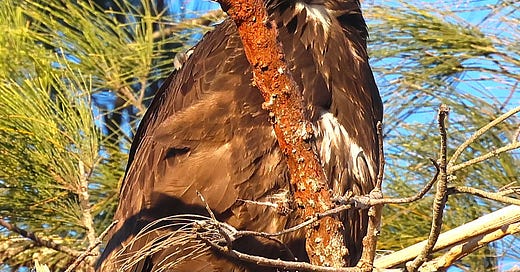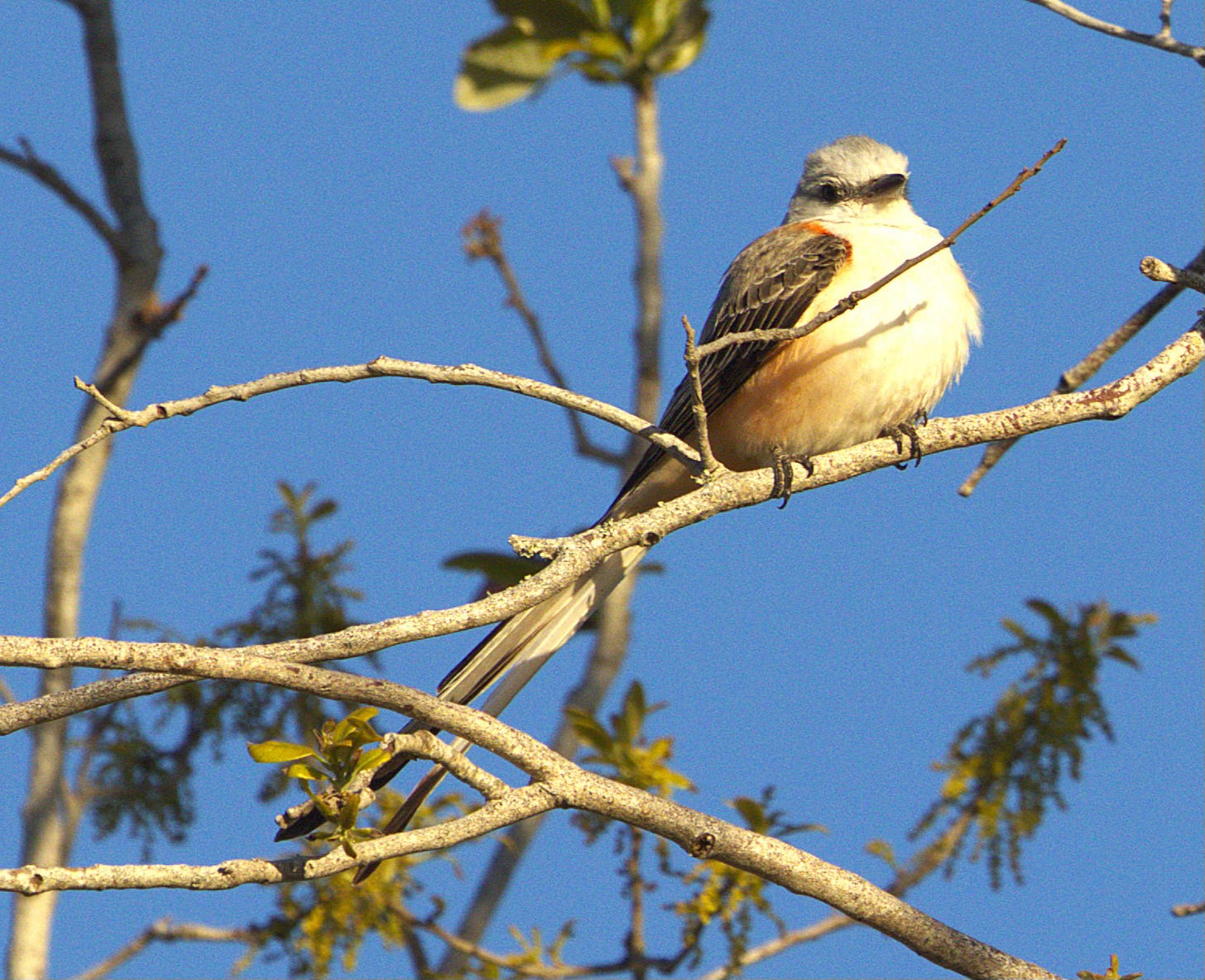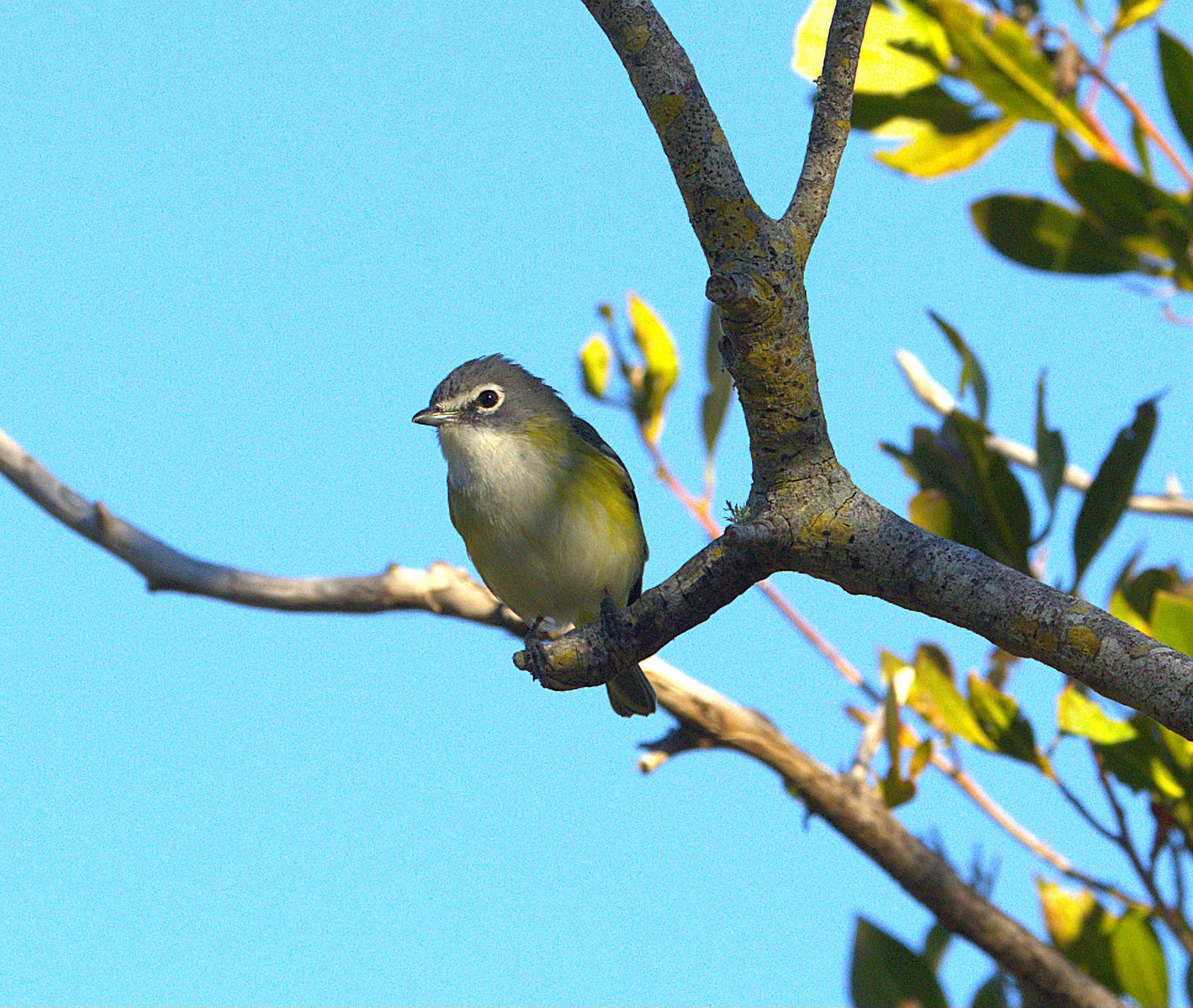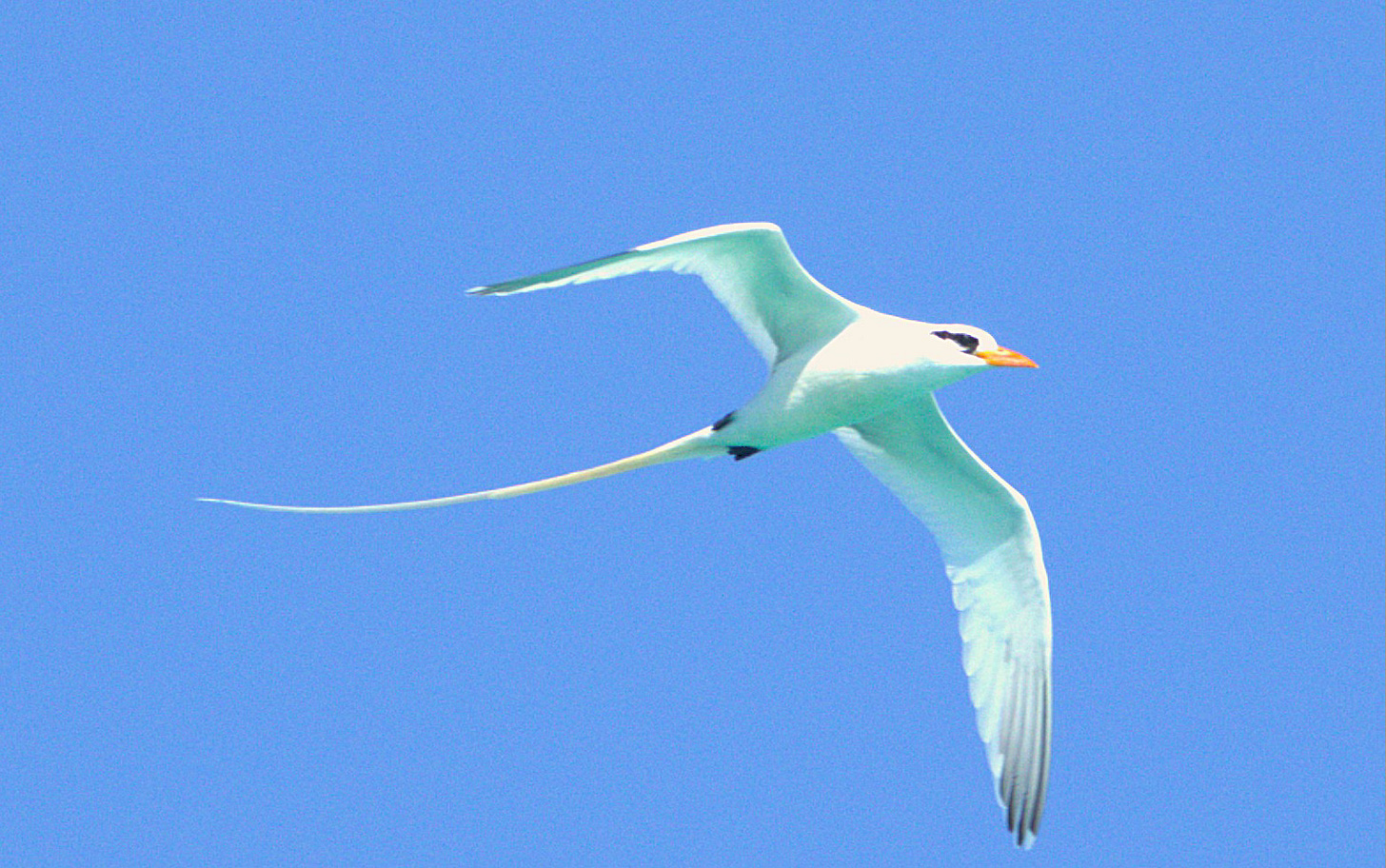1. Let's start with some good news from Nebraska - and check out the picture of "Crane Count chalk board" to get a sense of the sheer numbers of Sandhill Cranes passing through now: The sandhill cranes migration is a yearly tradition in Nebraska. When driving along the stretch of Interstate 80 between Grand Island and Lexington, it can be hard not to see the birds in nearby fields. This year, they have been facing an uphill battle with potential to catch H5N1. Sandhill cranes have been coming through Nebraska dating back nine-million years, predating the 10,000-year-old Platte River. People from all around the state, country and world come to see hundreds of thousands of sandhill cranes stop off in central Nebraska to refuel between their long flight from the southern United States and Mexico to Canada. (via Nebraska Public Radio)
2. Birds can even trump war and deep divisions in the Middle East - specifically, in this case, Barn Owls: Throughout 15 months of brutal war in the Middle East, an unlikely cross-border scientific collaboration has endured. Ornithologists at Tel Aviv University in Israel have continued to meet online with their counterparts in Jordan, the Palestinian territories and European countries to study the potential for barn owls (Tyto alba) to reduce pesticide use in agriculture. The project enlists the owls to devour crop-eating rodents instead of relying on farmers using toxic rodenticides to control populations. In January, shortly after a ceasefire was signed between Israel and Hamas in Gaza, researchers from 13 countries gathered in Greece. Their mission was both to discuss how to expand the use of barn owls for biological control and to promote the project as an example of research collaboration to promote peaceful coexistence. (via Nature)
By Hap Ellis, Juvenile Bald Eagle - Longboat Key, FL.
3. "Road rage" in the Galapagos says this study in Animal Behavior: A new study has discovered that birds in the Galápagos Islands are changing their behavior due to traffic noise, with those frequently exposed to vehicles showing heightened levels of aggression. Published in the journal Animal Behaviour and led by experts from Anglia Ruskin University (ARU) and the Konrad Lorenz Research Centre at the University of Vienna, the research examined the impact of vehicle noise pollution on Galápagos yellow warblers (Setophaga petechia aureola), a songbird widespread on the archipelago. The Galápagos Islands, located over 500 miles off the coast of Ecuador, are considered a natural living laboratory due to the large number of unique, endemic species. The Galápagos yellow warbler is genetically distinct from other yellow warblers found in the Americas and is classified as a subspecies. (via Phys Org)
4. Winter coats become summer nests - birds and bison: Bison are well-known for their massive, woolly coats, which help them survive the harsh winters of the American West. But that same fur, once shed for the summer, has an unexpected purpose when it comes to birdlife. Many bird species, like fiches, sparrows, and blackbirds, use bison fur to build their nests. The coarse texture of the fur may also offer excellent insulation, keeping eggs warm during the cold months and providing a soft bedding for chicks. This symbiotic relationship between bison and birds is a perfect example of how different species in an ecosystem rely on each other in ways we might not expect. And while bison’s fur benefits bird populations, it’s not just the birds that are thriving. (via Environment Colorado)
5. A "bro-bias" when studying birds - in the birds, that is, not among the researchers: Did you know female birds can sing? That might sound like a simple statement—an obvious statement—but just a little over a decade ago, most scientists viewed birdsong as trait that belonged nearly exclusively to male birds. This is just one of many ways scientists have historically short-changed female birds, researchers argue in a new study published in the International Journal of Avian Science. “People tend to have an unconscious bias towards male birds, and that’s often because they’re brighter and easier to identify,” says lead author Joanna Wu, an ornithologist and ecologist at the University of California, Los Angeles. These biases echo similar ones in human studies and could impact efforts to save species from threats like climate change and habitat destruction. (via National Geographic)
6. From Indore, often referred to as India's "cleanest city" some discouraging migration data: Arrival of migratory birds, particularly ducks and waders, is declining significantly in India’s cleanest city, Indore. Comparison of data gathered from bird watching excursions and studies conducted by birders and ornithologist in December 2023 and December 2024 in Indore has revealed decline in overall count of bird species, including those birds migrating from Eurasian region (including Russia, Central Asia, and Mongolia). (via MSN)
By Hap Ellis, Scissor-tailed Flycatcher - Longboat Key, FL.
7. Quick piece from NPR on micro plastics in seabirds: New research shows that ingesting plastic can cause organ dysfunction and other health problems in birds. Over and over, in the world's oceans, baby seabirds often mistake bits of trash for food. New research in the journal Science Advances shows that ingesting plastic can harm them in unseen ways. The main way biologist Alix de Jersey tells how much plastic a baby seabird has eaten is by feeling its stomach. When birds are really highly plastic impacted, we can actually feel the plastic rubbing beneath our fingers. But from the outside, such birds seem healthy. Much of what scientists know about how plastics harm birds comes from studying dead ones. But de Jersey, of the University of Tasmania in Australia, wanted to study some live birds. (via National Public Radio)
8. Bird Flu #1 - The Atlantic has an interesting discussion with a large egg farmer and its science writer: Top U.S. health official Robert F. Kennedy Jr. recently mused about a novel way to contain bird flu, which is to let it “run through the flock so that we can identify the birds, and preserve the birds, that are immune to it.” Just to be clear, this could involve millions of birds dying slower, more horrible deaths. Just to be more clear, this would not be the recommendation of most scientists, because it would only give the H5N1 virus that causes bird flu more opportunities to evolve, which it’s already doing at what experts see as an alarming rate. So far, the outbreak has caused one human death in the United States and several others overseas. In this episode of Radio Atlantic, we talk with Greg Herbruck, an egg farmer who’s already dealt with millions of deaths in his flocks, and the Atlantic science writer Katie Wu. (via The Atlantic)
9. Bird flu #2 - From NPR, smaller farms may be the big advantage Canada has over the U.S. - check it out: With egg prices in the United States at record highs, the U.S. Department of Agriculture is now exploring the ways other countries produce eggs for potential solutions. The department may not have to look far: Just over the border, eggs remain plentiful and affordable in Canada. Canadian chickens can catch avian flu, just like their American cousins. But the impact on Canada's egg supply has so far been limited. Von Massow suggests a number of explanations for that. It gets colder in Canada, so barns are more tightly sealed, which helps keep flu virus carried by wild birds out. Canada also has fewer free-range chickens, which are more susceptible to getting infected. But perhaps the biggest difference is that egg farms in Canada are much smaller, so when one farm does suffer a flu outbreak, the effects are less far-reaching. The typical egg farm in Canada has about 25,000 laying hens, whereas many farms in the U.S. have well over a million. In effect, American farmers have put a lot more of their eggs in a relatively small number of baskets. (via National Public Radio)
By Hap Ellis, Blue-headed Vireo - Longboat Key, FL.
10. For those so inclined, a new study on how a parrots' brain controls vocalization: Human speech arises courtesy of some significant neural horsepower. Different areas of the brain are involved in determining the meaning that's desired, finding the words to express it, and then converting those words to a specific series of sounds—and all that comes before the correct sequence of nerve impulses is sent to the muscles that produce the final output. Humans are far from alone in the animal kingdom with an impressive range of vocalizations, though. One group of species that's especially interesting is birds. Thanks to a newly released study, we now have evidence that different types of vocalization are the product of different control systems in the brain.(via Ars Technica)
11. Phys Org reports on the origins of "(one of) the most complex cutaneous appendages in the animal kingdom - feathers!: Feathers are among the most complex cutaneous appendages in the animal kingdom. While their evolutionary origin has been widely debated, paleontological discoveries and developmental biology studies suggest that feathers evolved from simple structures known as proto-feathers. These primitive structures, composed of a single tubular filament, emerged around 200 million years ago in certain dinosaurs. Paleontologists continue to discuss the possibility of their even earlier presence in the common ancestor of dinosaurs and pterosaurs (the first flying vertebrates with membranous wings) around 240 million years ago. Proto-feathers are simple, cylindrical filaments. They differ from modern feathers by the absence of barbs and barbules, and by the lack of a follicle—an invagination at their base. (via Phys Org)
12. A paean to the Eastern Bluebird: Out of my office window, which looks out onto a large plot of lawn, there are two nest boxes on poles. One of these is lying on the ground; the victim of the high winds that we had in past weeks. However, the other has managed to stay upright and in the bright sun of Friday morning I saw a little streak of blue fly from the top of my roof (just above my office window) to the standing box. It was a male eastern bluebird (Sialia sialis) and he was not alone. I have lived in the same house for 20 years and ever since the first summer that I moved in, there have been nest boxes in my side yard. There has never been a summer that these boxes haven’t been occupied by someone, but in most years it has been bluebirds that have nested in the same box. The other box is usually first claimed by tree swallows and then used by house wrens. House sparrows are never tolerated and are met with extreme prejudice. In my yard there will be no shenanigans from invasive species. (via The Greenfield Recorder)
By Hap Ellis, White-tailed Tropicbird - Shroud Cay, Bahamas.
13. Hope this works! BBC reports that when you need banks for nesting Sand Martins (technically, Bank Swallows), sometimes only a man-made bank will work: An artificial bird bank designed to provide a safe nesting site for sand martins has been installed in a nature reserve in the north of the Isle of Man. The 10m (33ft) wide, and 2m (7ft) tall structure has been erected at the Manx Bird Life Point of Ayre National Reserve. Charity Manx BirdLife which runs the reserve said that sand martins, small migratory birds, currently nest in the working quarry near the reserve. However, due to a changing landscape, the sites had become less dependable, which was why the bank was installed. (via The BBC)
14. Finally, from the Cornell Lab of Ornithology, the annual report on their NestWatch program. Citizen science in action: We're thrilled to share our annual report showcasing an exceptional year of participatory science with NestWatch. Participant dedication in 2024 yielded remarkable results: 42,357 nest observations across 45 countries, a 17 .5% increase from 2023. With an additional 58,542 historic records uploaded, this past year also marked the successful completion of our transcription of the North American Nest Record Card collection, a huge milestone that has been 6 years in the making (see pages 4–5). We also joined forces with American Kestrel Partnership in 2024 to ensure a long-term, stable data-entry platform and database home for their participatory science nest-monitoring program. (via CornellLab NestWatch)
Bird Videos of the Week
Video by WJZ, “Where’s Marty: Catching up with one of the world’s top birders”.
Cornell Live Bird Cam - Great Horned Owl.
Cornell Live Bird Cam - Arthur Brings Breakfast!









Hey, you guys might like our latest post:
https://californiacurated.substack.com/p/feathers-on-the-flyway-unraveling
BTW: I love your newsletter.